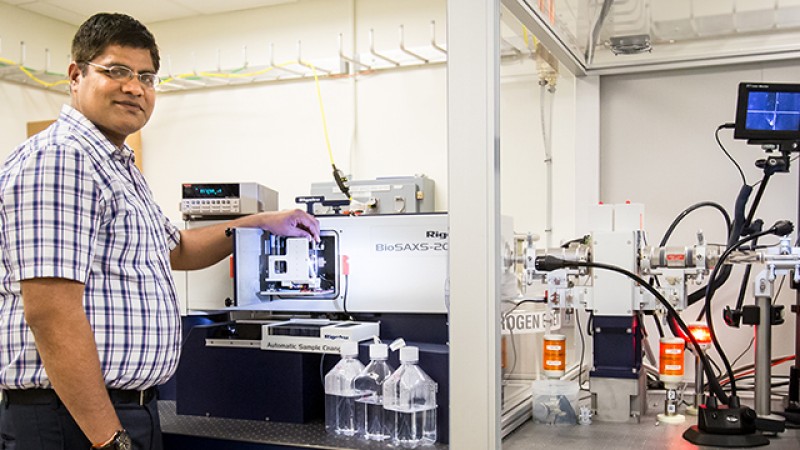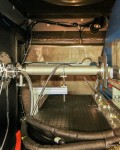Rahul Saxena of Georgetown University recently traveled to Oak Ridge National Laboratory’s Spallation Neutron Source (SNS), to examine the solution structure of Escherichia coli DnaA protein in the presence of acidic phospholipids using both neutrons and X-rays.
E. coli is an important species in the fields of biotechnology and microbiology, where it has served as the host organism for most of the work with recombinant DNA. Modified E. coli cells have been instrumental in the development of new vaccines, cancer-fighting drugs, antibiotics, and insulin; for bioremediation; and for biofuels development.
Saxena, aided by Christopher Stanley and Matthew Cuneo of ORNL’s Biology and Soft Matter Division, was awarded beam time to collect small-angle neutron scatting (SANS) data on DnaA at the SNS EQ-SANS instrument, beam line 6. Immediately prior to Saxena’s arrival, the X-ray radiation generator located in the SNS Biology labs was upgraded with small-angle X-ray scattering (SAXS) capabilities. Access to this SAXS facility made it possible for the team to collect SAXS and SANS data sets in tandem from these delicate DnaA samples, optimizing the use of their neutron beam time on EQ-SANS and enabling more detailed characterization and analysis of the data.
DnaA is a protein that activates initiation of DNA replication in bacteria. The experiment used SANS to investigate the structural details of full-length E. coli DnaA in the presence of two phospholipids—phosphatidylglycerol and cardiolipin. The team is exploring replication initiation and the role the cellular membrane plays in the assembly of large origin replication complexes.
“Protein chemistry and biochemistry have been a passion of mine since graduate studies, and I always wanted to do some structural studies,” said Saxena. “This is a great opportunity to come here and see what these machines can do and how they are useful in understanding the structures of proteins.”
SNS is a DOE Office of Science User Facility. UT-Battelle manages ORNL for the DOE’s Office of Science. The Office of Science is the single largest supporter of basic research in the physical sciences in the United States, and is working to address some of the most pressing challenges of our time. For more information, please visit http://science.energy.gov/.







